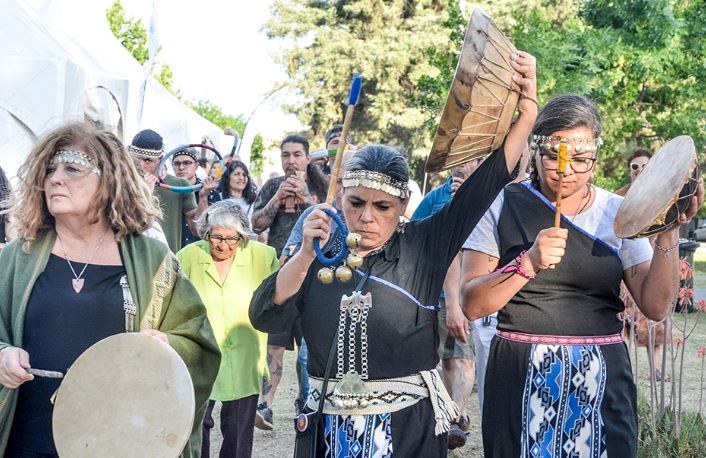What is the We Tripantu? Complete Guide For pais mapuche

pais mapuche
We Tripantu is the Mapuche celebration of the New Year in the southern hemisphere. The Mapuche are the indigenous people of present-day Chile and Argentina. “We Tripantu” translates to “New Year” or more literally, “the turning of the sun” in the Mapudungun language.
This celebration marks the Winter Solstice in the southern hemisphere, usually occurring on June 21st or 22nd. It is the time when the Mapuche people celebrate the return of the sun as the days start becoming longer and mark the beginning of a new agricultural cycle.
Some aspects and traditions of We Tripantu include:
- Connection with Nature: The Mapuche deeply respect and have a profound connection with nature. We Tripantu is seen as the time when the earth is reborn, rejuvenated, and begins a new cycle.
- Traditional Rituals: Celebrations typically start before dawn, with families gathering near rivers and streams to perform Nguillatún, a ceremony where offerings are made to thank the spirits and seek blessings for the coming year. People may immerse themselves in the water, symbolizing purification.
- Community Gatherings: We Tripantu is a time for community. People come together to share meals, sing traditional songs, dance, and play ancestral games. It’s a period of reaffirmation of ancient traditions and teachings.
- Food: Traditional foods are prepared and shared. These often include foods like sopaipillas (a kind of fried bread), mote (wheat grains), and various preparations made from corn.
The Mapuche are the indigenous inhabitants of south-central Chile and southwestern Argentina. They have a rich history that dates back thousands of years and have played a significant role in the region’s cultural and historical landscape.
Here’s a brief introduction to the Mapuche:
1. History and Origins: The Mapuche were originally hunter-gatherers and later adopted agriculture. By the time Spanish colonizers arrived in the 16th century, the Mapuche had established a series of chiefdoms.
2. Resistance and Wars: The Mapuche are notably recognized for their resistance against Spanish colonization. For over two centuries, the Spanish were unable to subdue the Mapuche territories fully, leading to a frontier called “La Frontera” that separated Mapuche lands from Spanish colonial settlements.
3. Language: The Mapuche speak Mapudungun. While there has been a decline in speakers due to assimilation pressures, there’s a renewed interest in revitalizing the language, especially among younger generations.
4. Religion and Cosmology: The Mapuche’s spiritual beliefs are deeply tied to nature. They worship a variety of deities and spirits and have a dualistic view of the world, encompassing both good and evil forces.
5. Livelihood: Traditionally, the Mapuche relied on agriculture, hunting, and gathering. Today, many Mapuche continue to practice agriculture, but others have migrated to urban areas in search of employment.
6. Current Situation: While the Mapuche have faced various challenges, including land disputes and cultural assimilation, there’s a contemporary movement to reclaim Mapuche identity, rights, and traditions. This movement seeks not only the return of ancestral lands but also the recognition and respect of their culture and rights as indigenous people.
The term “Pais Mapuche” refers to the ancestral territory of the Mapuche people. Spanning parts of present-day south-central Chile and southwestern Argentina, this region is characterized by its rich indigenous history and vibrant cultural heritage.
Here’s a brief introduction:
Pais Mapuche (Mapuche Territory)
- Geography: The Pais Mapuche traditionally spans the valleys between the Itata and Toltén rivers in Chile, and parts of the Patagonian region in Argentina. This land encompasses a variety of terrains, from coastal regions to Andean highlands.
- Pre-Colonial Era: Before the arrival of the Spanish in the 16th century, the Mapuche inhabited their territories as semi-nomadic groups, practicing agriculture, hunting, and gathering. They established a complex social structure with roles defined by lineage and kinship.
- Spanish Resistance: The Mapuche are renowned for their fierce resistance against Spanish colonization. They defended their territories for over two centuries, maintaining their independence and establishing “La Frontera,” a frontier that separated Mapuche lands from Spanish colonial domains.
- Cultural Significance: The Pais Mapuche is more than just a geographical region; it represents the heartland of Mapuche culture, traditions, and spirituality. Sacred sites, ancestral ceremonies, and traditional gatherings are deeply rooted in this land.
- Contemporary Issues: Modern challenges, including land rights disputes, industrialization, and assimilation pressures, have affected the Mapuche and their territories. Many Mapuche communities are actively working to reclaim their ancestral lands, rights, and cultural practices, advocating for recognition and respect.
In essence, Pais Mapuche is not just a physical space but also a symbol of the enduring spirit, resilience, and cultural identity of the Mapuche people. Recognizing and understanding its significance is crucial for appreciating the depth and richness of Mapuche heritage.










